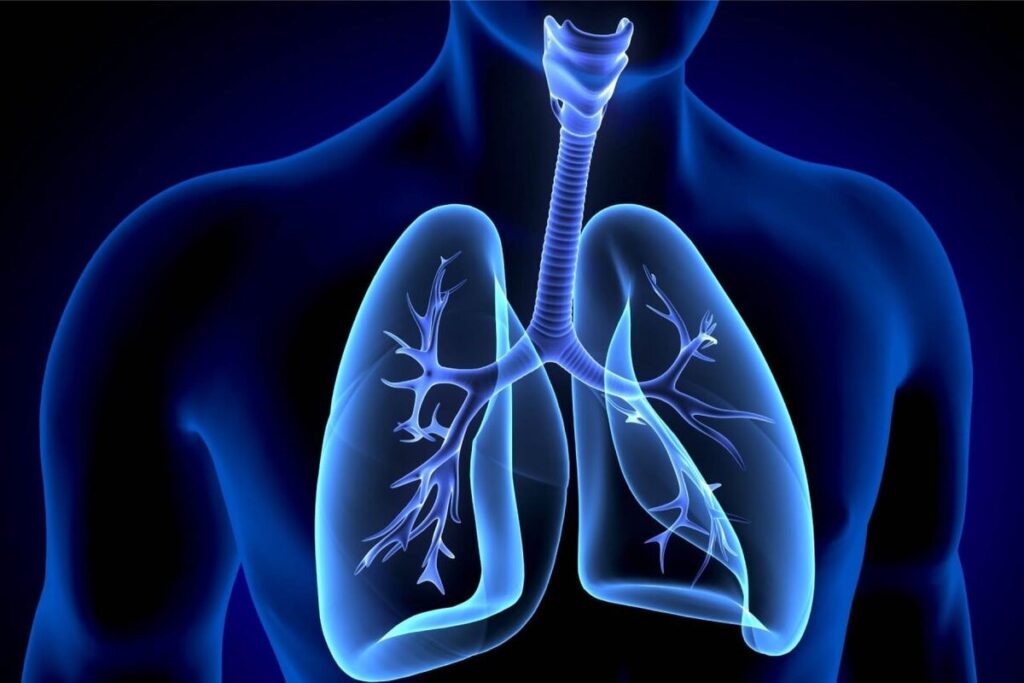
Wheezing can be a worrying sign, even if your lungs seem fine. At LivHospital, we know that wheezing doesn’t always mean you have lung disease. Sometimes, the sound may come from higher areas like the apices of the lungs, where airflow can become restricted due to inflammation or tension in nearby structures.
The Cleveland Clinic says wheezing happens when airways are partially blocked, creating a shrill whistle or coarse rattle sound. But if your lungs are clear, there might be other reasons for wheezing — such as vocal cord dysfunction or gastroesophageal reflux disease (GERD).
Our expert team at LivHospital investigates all possible causes, including issues affecting the apices of the lungs, to provide complete care that focuses on your whole health.
Wheezing is a common symptom of asthma and COPD. Yet, some people wheeze even with normal lung exams. This is confusing for both patients and doctors.
Diagnosing wheezing is tricky because of the disconnect between symptoms and test results. Doctors use chest X-rays and stethoscopes to check lungs. But, these tools might miss underlying issues that cause wheezing. A clear chest X-ray or normal lung sounds don’t always mean there’s no problem.

There are many reasons for the gap between wheezing and normal lung exams. Conditions like asthma or vocal cord issues might not show up on tests. Also, the top parts of the lungs are hard to check with usual imaging. Knowing about the lung apices meaning and their role is key to finding wheezing causes.
Medical imaging and listening with a stethoscope are important tools. But, they have their limits. A clear CXR doesn’t mean there’s no inflammation or other issues that could cause wheezing. More advanced tests might be needed to find the real cause of wheezing in people with normal lung exams. By knowing these limits, doctors can take a more detailed approach to diagnosing and treating wheezing.
When patients show wheezing but their lungs look clear on scans, vocal cord dysfunction is often the main reason. Wheezing is usually linked to asthma or COPD. But when tests and scans show nothing wrong, doctors look for other causes.
Vocal cord dysfunction (VCD) makes the vocal cords close too much during breathing. This can cause wheezing and trouble breathing. It’s hard to spot because its signs are like asthma’s.

The way the vocal folds close can make symptoms seem like asthma. People with VCD might wheeze, have trouble breathing, or cough. This can make doctors think they have asthma.
To tell VCD from asthma, it’s key to know why symptoms happen. Asthma is about airway inflammation and tightness. VCD, on the other hand, is about the vocal cords closing wrong, often because of stress, anxiety, or irritants.
Research shows 30% of people with wheezing but no lung problems have VCD. This shows how important it is to think of VCD when diagnosing wheezing.
Diagnosing VCD needs a full check-up, like laryngoscopy to see the vocal cords when wheezing happens. Treatment might include speech therapy, breathing exercises, and managing what triggers it.
Knowing about VCD helps doctors treat the real cause of wheezing. This leads to better care and a better life for patients.
Upper airway conditions can greatly affect how we breathe, focusing on the lung apices. These are the top parts of the lungs. They are key when figuring out why we wheeze.
The way the upper airways and lung apices are connected is important. The upper airways, like the trachea and bronchi, are vital for breathing. Problems here can cause wheezing, even if the lower lungs look fine on X-rays.
The lung apices are at the top of the lungs, above the collarbone. This area is less likely to get infections than the lower lungs. But, when it does, it can cause serious breathing problems, like wheezing.
Understanding the Connection
The link between upper airway issues and wheezing comes from the lungs’ structure. Problems in the upper airways can narrow or block airways, causing wheezing. This is true for conditions affecting the trachea or main bronchi, as they directly impact airflow to the lung apices.
Diagnostic Challenges
Finding the cause of wheezing due to upper airway problems can be tough. Chest X-rays might look normal, showing no lung issues. But, this doesn’t mean there’s no problem. Tests like CT scans or special lung function tests might be needed to find the real cause.
GERD is when stomach acid flows back into the esophagus. It can cause wheezing in some people. This happens when stomach acid irritates the airways, causing spasms and wheezing sounds.
The way GERD causes respiratory symptoms is complex. Stomach acid can irritate the airways, leading to spasms. This irritation can cause inflammation and more mucus, making breathing harder.
A study in a medical journal shows the connection between GERD and respiratory symptoms. It points out the need for thorough diagnosis and treatment plans. You can read more about it here: the link between GERD and respiratory symptoms.
Research shows GERD is linked to 20-40% of non-asthmatic wheezing cases. This highlights the importance of considering GERD in diagnosing unexplained wheezing. Accurate diagnosis is key for effective treatment, as GERD-related wheezing may not respond to asthma treatments.
“The connection between GERD and respiratory symptoms like wheezing is a critical area of study, as it can lead to better management and treatment of patients.”
Understanding the link between GERD and wheezing is vital for healthcare providers. They need to develop proper treatment plans. This includes managing GERD symptoms and addressing respiratory issues.
Wheezing isn’t just about lung problems. Other health issues can also cause it, even if the lungs seem fine. It’s important to look at a wide range of possible causes when we see wheezing but clear lungs.
Heart problems can seem like lung issues, including wheezing. For example, heart failure can cause fluid in the lungs. This fluid irritates the airways, making wheezing sounds.
Key cardiac conditions to consider:
These heart problems can make it hard to tell if someone has a lung disease. To find the real cause, doctors need to do more than just listen to the lungs. They might use imaging and other tests.
Some diseases affect the whole body and can show up in the lungs. Sarcoidosis, for example, can grow in the lungs and cause wheezing. Other diseases like rheumatoid arthritis and lupus can also affect the lungs.
Examples of systemic disorders:
These diseases show why we need to look at all possible causes of wheezing. Doctors from different fields working together can help find the right diagnosis.
In short, wheezing with clear lungs means we need to check for many possible causes. This includes heart problems and diseases that affect the whole body. By understanding these different causes, doctors can give better care and treatments.
When patients have wheezing but clear lung X-rays, finding the cause is key. We look at many possible reasons and use special tests to find the problem.
Standard chest X-rays are a first step for respiratory issues. But they might not show why someone is wheezing. We use more detailed tests, like:
These tests help us find the real cause of wheezing. It could be vocal cord issues, GERD, or other problems.
Wheezing can be ongoing, but sometimes it’s urgent. We tell patients to go to the emergency room if they have:
If you’re having these symptoms, get help right away. Our place has advanced care for wheezing and other breathing problems.
Wheezing with clear lungs is a complex issue that needs a full check-up to find the cause. We talked about different reasons for wheezing, like vocal cord issues, airway problems, and GERD.
If you’re wheezing or have other breathing issues, see a doctor. At LivHospital, we offer top-notch care for all health needs. Our team will help find what’s causing your symptoms and create a treatment plan.
Getting medical help can lead to a proper diagnosis and treatment. This can greatly improve your quality. We urge you to take care of your health and get the treatment you need for better health outcomes.
A clear chest X-ray means your lung tissue looks normal. But wheezing can happen for other reasons. These include vocal cord dysfunction, upper airway blockage, or gastroesophageal reflux disease (GERD).
Yes, vocal cord dysfunction (VCD) can cause wheezing. This is because the vocal folds close abnormally. It can look like asthma, even if your lungs are fine.
GERD can lead to wheezing by causing airway spasms. This happens when stomach acid goes up into your throat. Your lungs might look clear on a chest X-ray, but you can have wheezing.
Yes, other issues like heart problems or systemic disorders can also cause wheezing. This is even if your lungs look normal.
To find out why you’re wheezing, tests like laryngoscopy or gastrointestinal endoscopy might be needed. These go beyond just chest X-rays.
If you have severe wheezing or trouble breathing, get help right away. It’s an emergency.
No, a clear lung X-ray doesn’t mean you’re okay. Some issues, like upper airway blockage or VCD, might not show up on a chest X-ray.
LivHospital has a team of experts ready to help. They can do advanced tests and treatments. This is to find and treat the real cause of your wheezing, even if your lungs look fine on a chest X-ray.
Subscribe to our e-newsletter to stay informed about the latest innovations in the world of health and exclusive offers!
WhatsApp us